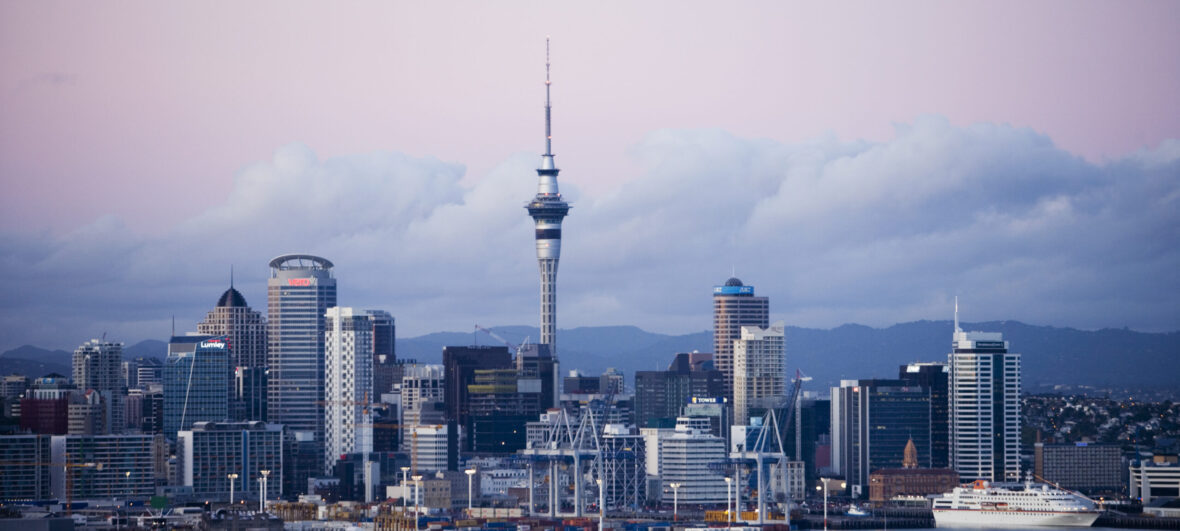Graeme is the regional business line director for the Buildings + Places team in Australia and New Zealand at AECOM. Based in Auckland, he leads a team of over 650 people delivering projects across sectors including healthcare, education, commercial, high-tech, transit, aviation and defence.
Graeme is passionate about bringing together multidisciplinary teams, drawing on individual experiences and skillsets from across AECOM’s global network to provide clients with integrated and collaborative solutions.
With 20 years of experience, he began his career as a structural engineer, which led him to deliver projects around the world, focusing on social infrastructure assets including healthcare, primary and tertiary education and public housing.
1. What inspired you to join the industry.
My father was an estimator for building contractors, and I spent a lot of my childhood visiting him on various construction sites or taking Sunday afternoon drives to look at prospective projects. I was probably always destined to embark on a construction-related career. As a child (and an adult, if I am honest), I was always playing Lego and took an interest in anything relating to design and construction. As I progressed through university studying engineering, it became clear that my interests were particularly in structural engineering.
2. What is your favorite AECOM project that you’ve worked on and why?
My professional career began in Scotland. After four years of learning the basics as a structural engineer, I moved to Northern Ireland. At the time Belfast was going through a period of rebuilding following the Good Friday agreement, with investment shifting from security to infrastructure. It was extremely rewarding to know that the projects we were designing were positively contributing to the community.
The work I did at Belfast City Hospital is probably the most memorable – this is where I undertook the role of design manager for the first time. I’ve always enjoyed Design and Construct projects the most, and here I really thrived on the responsibility and freedom I had in the role. I forged some strong professional relationships where we worked together to deliver a cost-effective solution ahead of program. I particularly enjoyed working with all disciplines including architecture, structural and civil engineering – it’s at that interface where it’s really clear to see the value created when teams come together to achieve a common goal.
3. Tell us a story of how your work positively impacted the community.
I’ve worked across many different sectors during my career, but I have always had a particular interest in social infrastructure. I am proud of the work we have done in New Zealand for Kāinga Ora – Homes and Communities, which is responsible for delivering the Government’s priorities for housing and urban development across the country. The most rewarding project for me was the seismic design work we delivered which ensured that homes were up to seismic standard. Our work ultimately contributed to the well-being of some of the most vulnerable people in society, which made me feel like we were having a real impact on the community.
4. The new world order – what are the challenges and opportunities that you think lie ahead as a result of the coronavirus pandemic?
The pandemic has led to a shortage of skilled workers in our industry. International border closures have restricted global mobility, making it extremely difficult to bring in talent from overseas to complement the local workforce. We don’t know yet how long this will last, and so our industry has lost key talent with expats departing to go back home because of this uncertainty. This places more pressure on organisations to attract new talent. Equally, it’s exciting to be part of a global network at AECOM where the pandemic has made virtual communication more seamless so we can genuinely access resources and talent globally.
I think the pandemic will also create opportunities to deliver more innovative design solutions. I think it’s inevitable that asset owners will expect smarter design responses to some of the challenges that the coronavirus has thrown at us, particularly around the control of infectious disease. There are lessons that have been learnt over the past 18 months which can drive us to deliver safer infrastructure in future, whether that’s a hospital, school, office building or sports stadium.
5. What excites you about the future of practice?
I’m really proud to lead a team of 650 team members across Australia and New Zealand. I’m extremely excited at the diversity of projects the team is delivering – our clients are increasingly seeking more innovative and sustainable outcomes, and these projects are providing incredible learning opportunities for our team members.
There is also an ever-increasing awareness and responsibility that our team members have to ensure they positively contribute towards delivering sustainable legacies for our clients and communities. This responsibility crosses every one of our disciplines, whether you are a structural engineer, a mechanical engineer, an urban planner or a cost manager. Our team members are thinking much more broadly than delivering a technical solution in a silo – and more about longer-lasting and adaptable infrastructure that future generations can enjoy.
6. Reflecting on your career journey so far, has there been a pivotal moment that has impacted your approach to leadership?
I’ve always tried to maintain perspective during my career. It can be difficult to turn off, especially when you’re working to tight deadlines. As an engineer, I have often struggled with striving for perfection. However, it’s so important to maintain balance to be truly present both at home amongst friends and family and at work. I also think it’s critical to look after each other and go a step further to help a team member out. This helps create deeper and more trusted relationships, making work so much more enjoyable and rewarding when you can celebrate your successes together.
